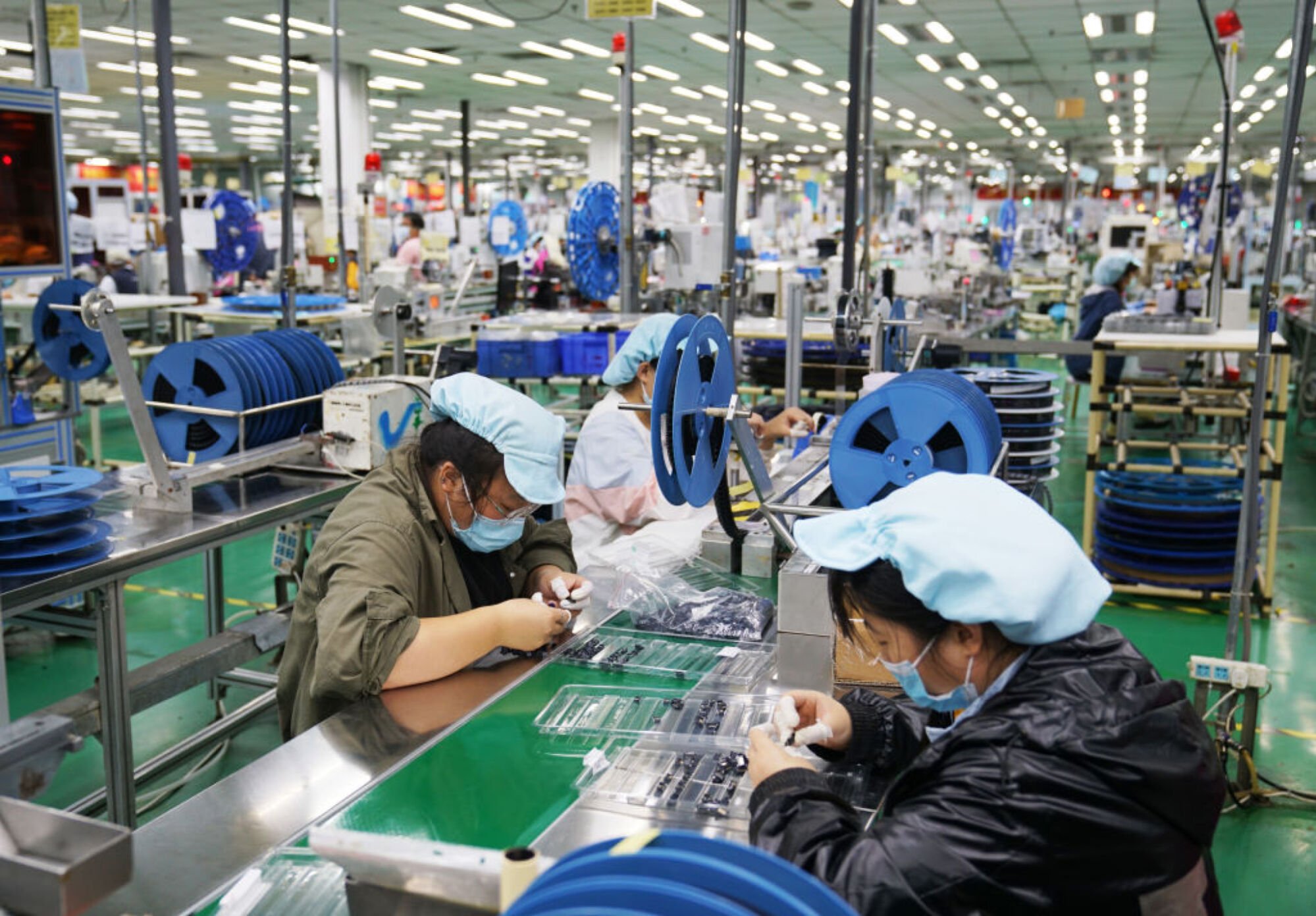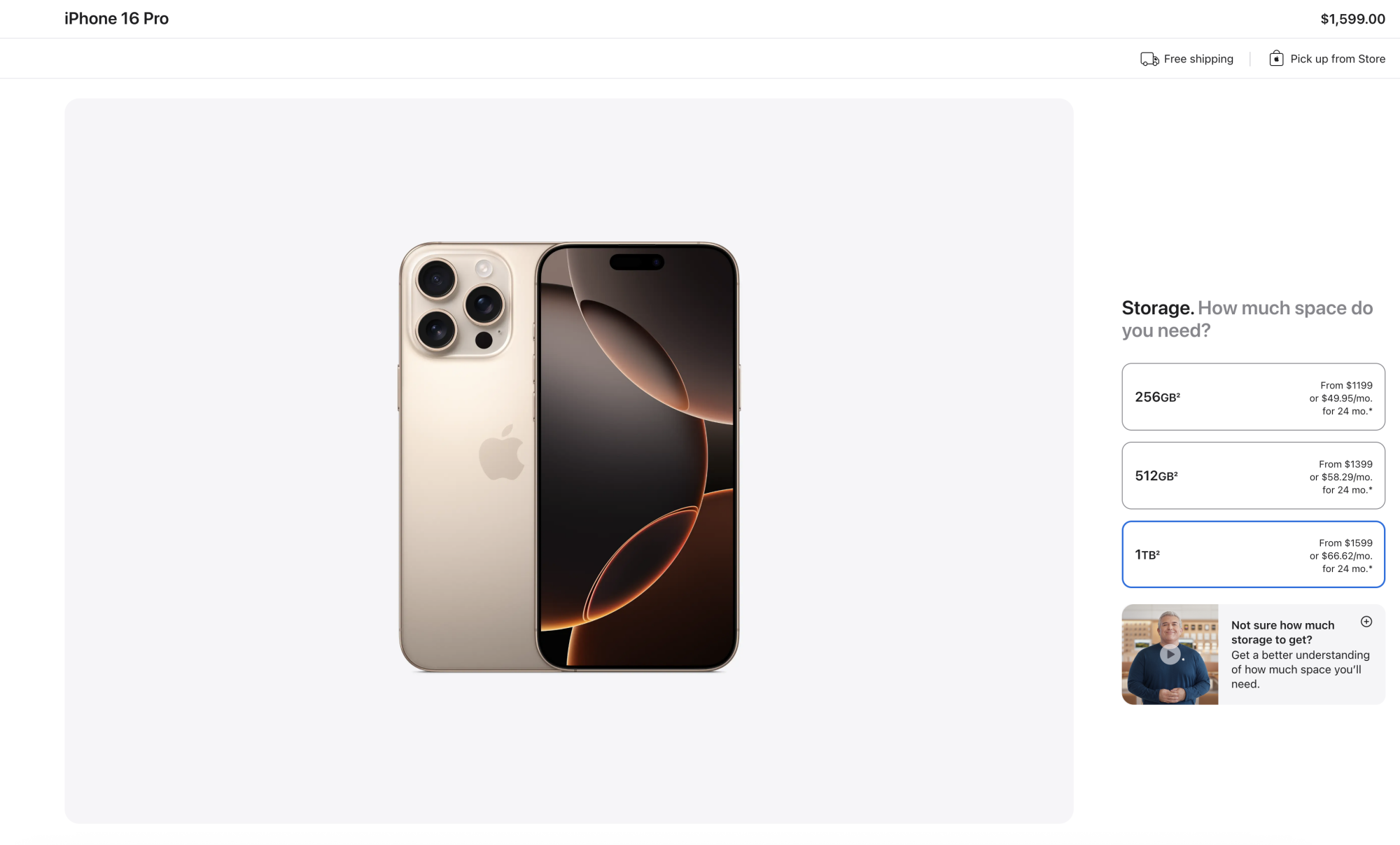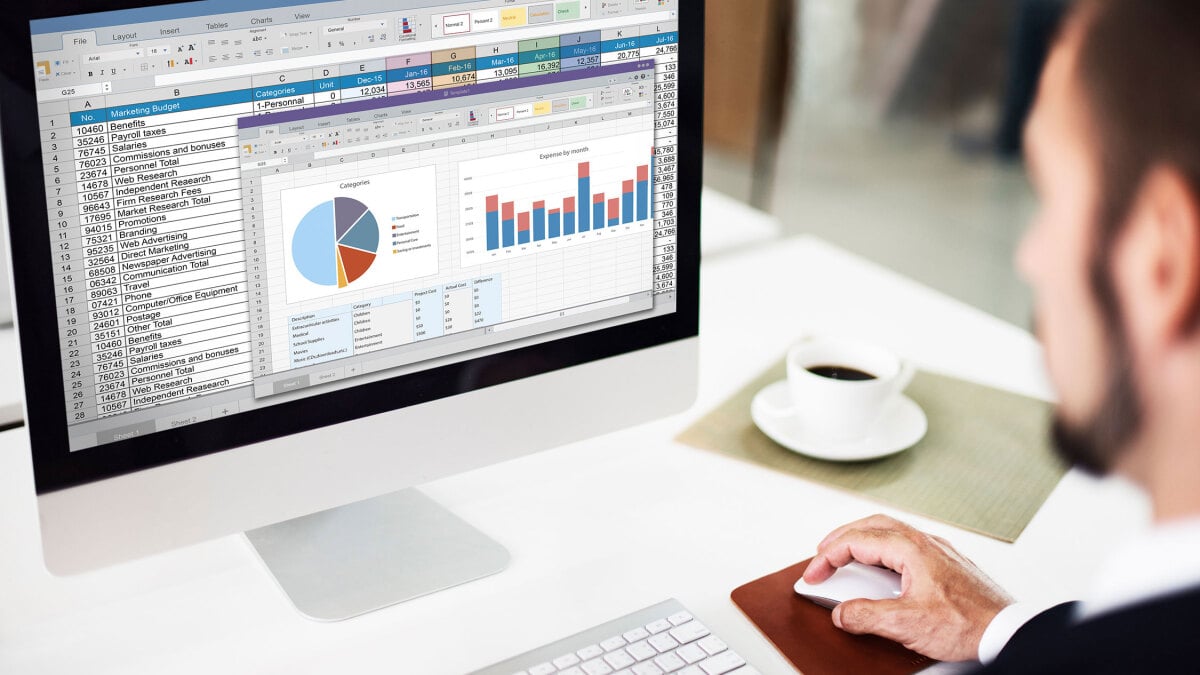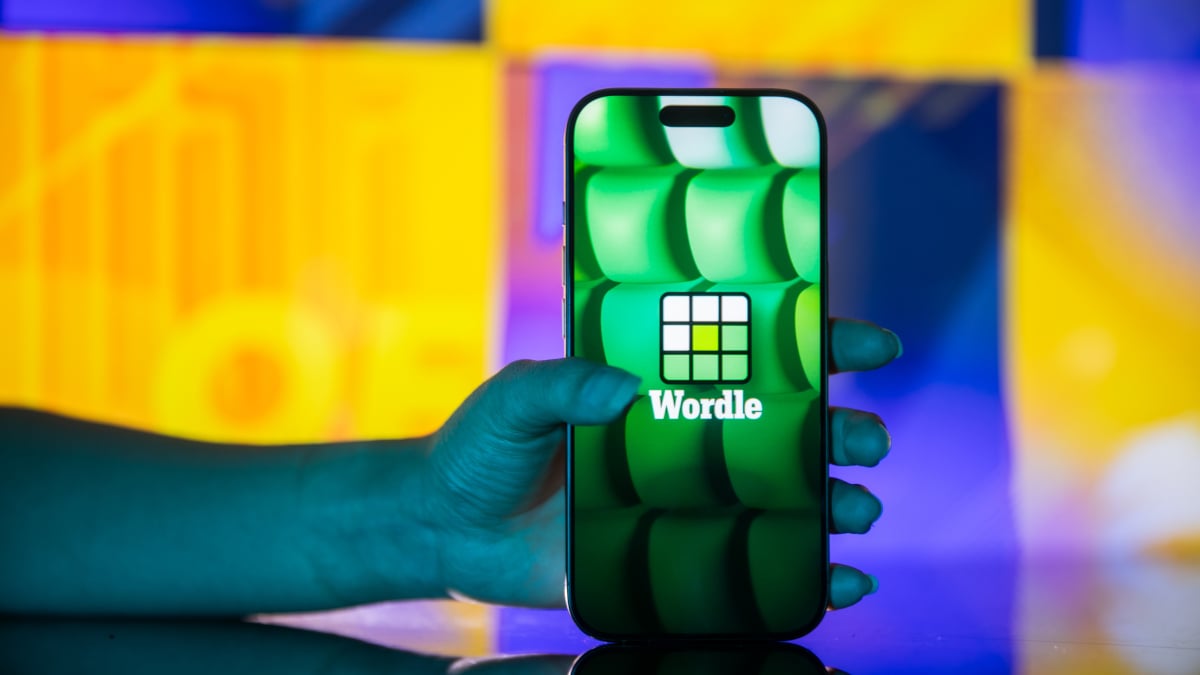Entertainment
How much would the mythical made-in-the-U.S. iPhone cost?

President Donald Trump’s tariff policy has thrown the global economy into crisis, with the stated goal of bringing manufacturing back to the United States. In addition to global tariffs of 10 percent, the president has imposed a seemingly ever-increasing reciprocal tariff on imported Chinese goods (the White House’s latest figure is 245 percent). Considering how many iPhones are made in China, this could mean a sharp price increase for Apple’s most important product.
Could Apple alleviate tariff pressure by moving production back home? White House Press Secretary Karoline Leavitt recently told the press that President Trump believes it is possible.
“He believes we have the labor, we have the workforce, we have the resources to do it,” she said.
But is it really feasible to manufacture an iPhone in the United States? And if Apple were to completely manufacture and assemble the iPhone in the U.S., how much would it cost?
The short answer? The mythical made-in-America iPhone would cost about $3,000, but it would cost Apple billions more. Let’s break it down.
Where are iPhones made, and how much do they cost to make right now?
The answer isn’t as simple as the White House would have you believe. To even begin answering it, we first have to face the fact that we don’t know how much it costs to manufacture an iPhone right now. Apple has never shared the exact figure, and probably never will. Even if we knew the exact cost of every single part that goes into an iPhone, as well as all the other production costs that go into manufacturing an incredibly complex device like that, there are still other associated costs, including research and development and marketing.
But we have to start somewhere, so let’s take last year’s figures by investment bank TD Cowen (via AppleInsider), which estimated the total “bill of materials” cost of making an iPhone 16 Pro Max at $485.
The figure is a simplification and (possibly) an amalgamation, because Apple doesn’t produce its iPhones in just one place. Counterpoint Research estimates that roughly 80% of iPhones are produced in China, with the rest being manufactured in India. The sum of production costs probably isn’t the same for each iPhone manufacturing plant, and this discrepancy is likely to drastically increase given that the current tariff on Indian imports is 10%.

Apple CEO Tim Cook holds an iPhone 15 during an Apple event in Cupertino, California
Credit: Justin Sullivan / Getty Image
Even if Apple were to start manufacturing iPhones in the U.S., the process would likely be gradual. The company recently announced a $500 billion investment in the U.S. over the next four years, including a new factory in Houston, Texas, which will create “thousands” of jobs. But that factory will open in 2026, and in it, Apple will manufacture servers, not iPhones.
For comparison, Taiwan-based Foxconn — Apple’s chief manufacturing partner for the iPhone — reportedly hired more than 50,000 new workers ahead of iPhone 16 production. The company employs nearly one million full-time and part-time employees globally.
So, no matter how much the final product costs consumers, bringing iPhone manufacturing to the U.S. would cost Apple billions, and possibly tens of billions, more.
Mashable Light Speed
Can it even be done?
All signs point to no — or, at least, not anytime soon. In 2017, Apple CEO Tim Cook laid it out very clearly: “The popular conception is that companies go to China because of low labor cost…but the truth is China stopped being a low labor cost country many years ago. That is not the reason to come to China…The reason is because of the skill and the quantity of skill in one location, and the type of skill it is.”
If you don’t believe Cook, or his predecessor, Apple co-founder Steve Jobs, who shared a similar opinion in 2012, you can take a look at one of the rare, real-world examples we have. In 2019 (during Trump’s first presidency), Apple committed to producing the Mac Pro in Texas. The sales volume of the Mac Pro is orders of magnitude lower than that of the iPhone, but Apple still ran into problems, such as being unable to produce enough of a specific kind of screw for the Mac.

Employees work at a Foxconn factory in Zhengzhou City, China.
Credit: VCG / Getty Images
We also asked Willy Shih, Professor of Management Practice at Harvard Business School, if it would be possible, and his answer was a very cautious maybe. Some day, it will be possible to build the iPhone in the U.S., he told Mashable in an email interview. “But only when we get to much higher level of heterogeneous integration in the electronics, so phone assembly is easier to heavily or fully automate.” He added, “we would still have to import a lot of high-value components.”
In short, moving the entirety of iPhone production to the U.S. is something that would require many years, immense costs, and is unlikely to be cost-effective.
If it happened, how high would the price be?
Let’s imagine that Apple truly committed to the goal of manufacturing the iPhone entirely in the U.S., and that the company pulled off this feat in the near future. How much would the iPhone cost if it was made in the U.S.?
One figure we’ve seen comes from Wedbush Securities’ head of technology research Dan Ives, who says that a modern iPhone manufactured in the U.S. would cost around $3,500 (he didn’t mention a specific model).
Shih agrees on this ballpark figure. By comparing the costs of assembly labor for a smartphone in the U.S. and China, and taking into account the differences between logistic costs, duties on components, and manufacturing yields, a guestimate is possible. He guesses that you’d end up with a U.S. retail price of “somewhere between $2,500-$3,000,” but he stressed how many complex manufacturing obstacles Apple would need to overcome first.

The most expensive iPhone right now, an iPhone 16 Pro Max with 1TB of storage space, costs $1,599.
Credit: Apple
Another figure, coming from Luke Capital investor Glenn Luk, who tackled the question in 2018, will make your eyes water. Luk claimed that the home-made iPhone would cost somewhere in the $30,000 to $100,000 range. Yup, that’s six figures for an iPhone.
“In fact, if Apple were forced to solely manufacture the iPhone in America, there is a good argument that it would not be able to manufacture any at all. And if they could somehow successfully make the manufacturing transition, capacity would likely be constrained to just a few million units a year, said Luk.
The massive discrepancy between these figures indicates that the question is incredibly difficult to answer. Undoubtedly, making the iPhone at home would be a lot pricier. Given the higher costs, and given how fluid the tariffs are, why would Apple commit to such a big manufacturing investment?
And let’s not forget about the massive volume Apple is working with — the company shipped an estimated 225.9 million iPhones in 2024. Building some iPhones in the U.S. is one thing, but producing sufficient volume to satisfy demand is a different story. “The key issues are obviously labor cost, whether you can recruit sufficient labor for the volumes they need, and of course the supply of components, many of which have never been made in the U.S.,” said Shih.
Is there a more realistic scenario?
Given that President Trump has already walked back some of his tariffs, the answer is obvious: Apple will likely continue producing the iPhone overseas. The retail price of the smartphone will possibly go up a little, depending on where the tariff negotiations end up.
The company may also shift production to other countries, such as India (Foxconn has already moved some of its production capacity there, and is looking to expand further).
Finally, Apple may, over time, bring some of its production to the U.S. — though almost certainly focusing on devices that aren’t produced at the iPhone scale.
The good news? That $3,000 iPhone isn’t something you should fear, at least not right now.
Keep checking Mashable for our latest tariff news and explainers, from delayed Nintendo Switch 2 pre-orders to reports of iPhone 16 panic buying.
Entertainment
Best Mothers Day gifts: Show mom some love

Mother figures are the backbone of the world. Yours may be your biological mother, or maybe she’s your mother-in-law, your best friend’s mom, or simply someone whose motherly instinct has helped you through hard times.
Moms teach you the adulting necessities, give advice even if the problem is your fault, and above all, they put up with your shit and (almost) never complain.
The game plan here isn’t just to snag the last bouquet at CVS just so you’re not the kid who forgot Mother’s Day (but definitely also get flowers). And you don’t even need to spend a lot of money. (Peep our list of Mother’s Day gifts that cost less than $50. Want even more cheap gift ideas?
Skip the generic mugs and show your appreciation with a gift picked just for her: Whether it’s something to make a part of her life easier, something she’s mentioned wanting in passing, or simply something to make her feel like a damn queen, you can’t put a price on everything she’s done for you, but heartfelt gifts certainly help.
After all, they say “No matter how hard you try, you always end up like your mother.” But is that even a bad thing?
Entertainment
Ban subscriptions and get Microsoft Office 2024 for life for just £121

TL;DR: Grab Microsoft Office 2024 Home and Business for PC or Mac for just £120.54 through June 1.
You wouldn’t keep paying for Netflix if you could own your favorite shows, right? So why are you still subscribing to Office apps you use every day? Microsoft 365’s price keeps going up, but there’s finally a way to break free — and it’ll cost you way less in the long run.
Microsoft Office 2024 is the answer you’ve been looking for. Instead of monthly payments, simply pay £120.54 once and be set for life (reg. £188.37). It’s that simple. And, yes, this lifetime download works for PC or Mac.
What’s included?
This license comes with:
-
Word
-
Excel
-
PowerPoint
-
Outlook
-
OneNote
The newest version of Microsoft Office is a little different from Microsoft 365. But just because you’re switching to a lifetime license doesn’t mean you’ll miss out on some of the most recent updates. Word and Excel both still have AI integrations for text suggestions and smart data analysis, and PowerPoint still has improved tools for recorded presentations.
Once you’ve redeemed your purchase, you can install your apps on one computer. After that, they’re yours to use however you want. No more subscription fees or sudden price hikes to worry about.
Why rent when you can own?
Mashable Deals
Get a Microsoft Office lifetime license on sale for £120.54 with no coupon needed.
StackSocial prices subject to change.
Entertainment
Wordle today: Answer, hints for May 9, 2025

Oh hey there! If you’re here, it must be time for Wordle. As always, we’re serving up our daily hints and tips to help you figure out today’s answer.
If you just want to be told today’s word, you can jump to the bottom of this article for today’s Wordle solution revealed. But if you’d rather solve it yourself, keep reading for some clues, tips, and strategies to assist you.
Where did Wordle come from?
Originally created by engineer Josh Wardle as a gift for his partner, Wordle rapidly spread to become an international phenomenon, with thousands of people around the globe playing every day. Alternate Wordle versions created by fans also sprang up, including battle royale Squabble, music identification game Heardle, and variations like Dordle and Quordle that make you guess multiple words at once.
Wordle eventually became so popular that it was purchased by the New York Times, and TikTok creators even livestream themselves playing.
What’s the best Wordle starting word?
The best Wordle starting word is the one that speaks to you. But if you prefer to be strategic in your approach, we have a few ideas to help you pick a word that might help you find the solution faster. One tip is to select a word that includes at least two different vowels, plus some common consonants like S, T, R, or N.
What happened to the Wordle archive?
The entire archive of past Wordle puzzles was originally available for anyone to enjoy whenever they felt like it, but it was later taken down, with the website’s creator stating it was done at the request of the New York Times. However, the New York Times then rolled out its own Wordle Archive, available only to NYT Games subscribers.
Is Wordle getting harder?
It might feel like Wordle is getting harder, but it actually isn’t any more difficult than when it first began. You can turn on Wordle‘s Hard Mode if you’re after more of a challenge, though.
Here’s a subtle hint for today’s Wordle answer:
Gibberish.
Mashable Top Stories
Does today’s Wordle answer have a double letter?
There are no recurring letters.
Today’s Wordle is a 5-letter word that starts with…
Today’s Wordle starts with the letter T.
The Wordle answer today is…
Get your last guesses in now, because it’s your final chance to solve today’s Wordle before we reveal the solution.
Drumroll please!
The solution to today’s Wordle is…
TRIPE.
Don’t feel down if you didn’t manage to guess it this time. There will be a new Wordle for you to stretch your brain with tomorrow, and we’ll be back again to guide you with more helpful hints.
Are you also playing NYT Strands? See hints and answers for today’s Strands.
Reporting by Chance Townsend, Caitlin Welsh, Sam Haysom, Amanda Yeo, Shannon Connellan, Cecily Mauran, Mike Pearl, and Adam Rosenberg contributed to this article.
If you’re looking for more puzzles, Mashable’s got games now! Check out our games hub for Mahjong, Sudoku, free crossword, and more.
Not the day you’re after? Here’s the solution to yesterday’s Wordle.







